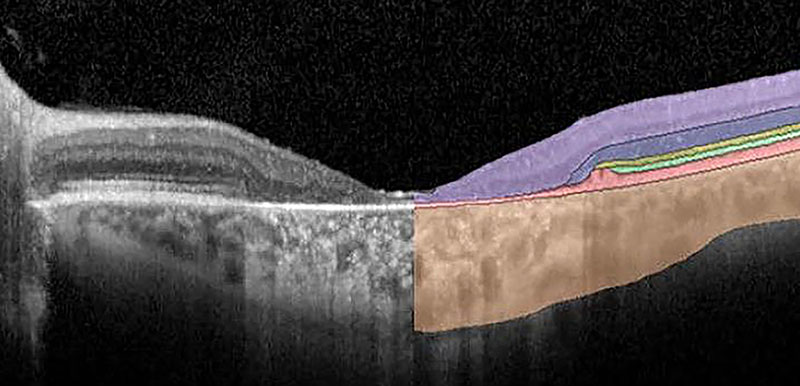IRP study classifies vision loss and retinal changes in Stargardt disease
Research sheds light on severity for gene variants; establishes outcome measures for therapeutic trials
National Eye Institute researchers developed and validated an artificial-intelligence-based method to evaluate patients with Stargardt, an eye disease that can lead to childhood vision loss. The method quantifies disease-related loss of light-sensing retina cells, yielding information for monitoring patients, understanding genetic causes of the disease, and developing therapies to treat it. The findings published today in JCI Insight.
“These results provide a framework to evaluate Stargardt disease progression, which will help control for the significant variability from patient to patient and facilitate therapeutic trials,” said Michael F. Chiang, M.D., director of the NEI, which is part of the National Institutes of Health.
About 1 in 9,000 people develop the most common form of Stargardt, or ABCA4-associated retinopathy, an autosomal-recessive disease caused by variants to the ABCA4 gene, which contains genetic information for a transmembrane protein in light-sensing photoreceptor cells. People develop Stargardt when they inherit two mutated copies of ABCA4, one from each parent. People who have just one mutated copy of ABCA4 are genetic carriers, but do not develop the disease. More rare forms of Stargardt are associated with variants of other genes.

Spectral-domain optical coherence tomography uses light to image layers of the retina. Many scans taken over five years were analyzed using deep learning, a type of artificial intelligence in which imaging data are fed into an algorithm that learns how to detect patterns. Six retinal layers were segmented and analyzed for changes in thickness.
This page was last updated on Friday, May 13, 2022